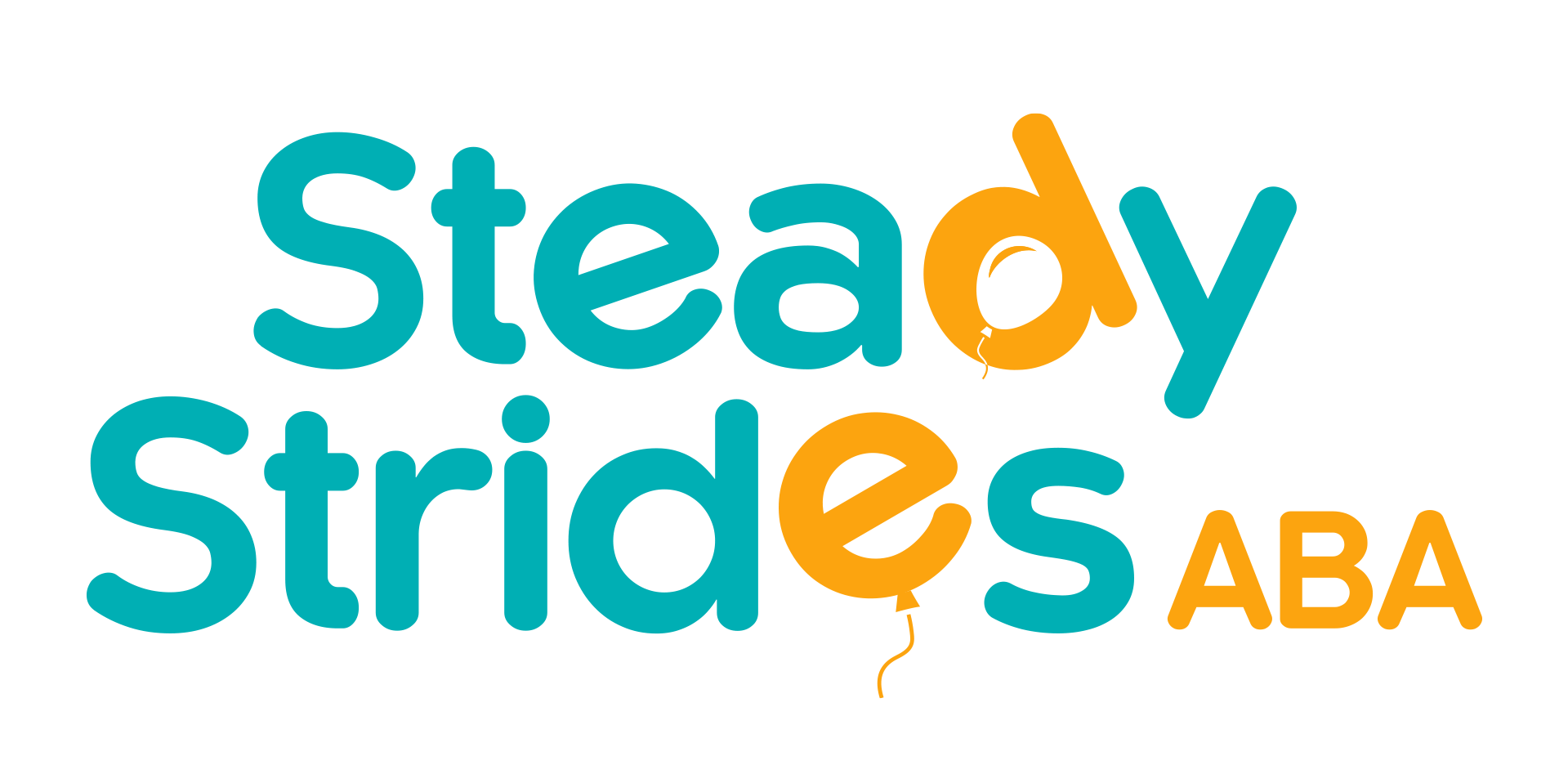Behavior analysts use various measurement procedures to track behavior patterns. Whole Interval Recording, a type of discontinuous measurement, focuses on the entire observation period and is valuable in capturing the duration of behaviors of interest.
By dividing the observation interval into smaller intervals, the behavior analyst can gain insights into the frequency and duration of the behavior, making it easier to keep track of intervals. Understanding the four types of discontinuous measurement procedures, including whole interval recording, is crucial for successful data collection in ABA therapy.
Understanding Whole Interval Recording in ABA Therapy
Whole interval recording is a technique used in applied behavior analysis (ABA) therapy to measure the duration and frequency of target behaviors. This method involves dividing the observation period into intervals and recording whether the behavior persists throughout the entire interval.
Unlike partial interval recording, where the behavior only needs to occur at any point within the interval, whole interval recording requires the behavior to persist for the entire duration of the interval. This method provides a more accurate measure of the duration of high-frequency behaviors but may underestimate the frequency of the behavior. It is commonly used in situations where the goal is to increase behavior, as long as the behavior occurs for at least a part of the interval.
Definition and Importance in Behavioral Analysis
Behavior analysis is a scientific study that focuses on understanding and modifying behavior. Applied behavior analysis (ABA) is a specific branch of behavior analysis that applies principles and techniques to improve socially significant behavior. Data collection is a critical component of ABA, as it provides the necessary information to identify target behaviors, track progress, and make data-driven decisions.
Whole interval recording is an important tool in behavioral analysis as it allows for the accurate measurement of the duration and frequency of target behaviors. By dividing the observation period into intervals and recording whether the behavior persists throughout the entire interval, ABA professionals can obtain valuable data on behavior patterns. This blog post will cover the definition and importance of whole interval recording in behavioral analysis.
This information can then be used to assess the effectiveness of interventions, make informed treatment decisions, and track progress over time. Whole interval recording provides a more comprehensive and accurate measure of behavior than other data collection methods and is particularly useful for high-frequency behaviors, as it captures both when the child engages in the behavior and when the child stops.
Key Principles Behind Whole Interval Recording
The key principles behind whole interval recording involve dividing the observation period into intervals, typically of equal duration, and recording whether the behavior persists throughout the entire interval. This method provides a more accurate measure of the duration of behaviors that occur frequently.
By using whole interval recording, ABA professionals can gain a comprehensive understanding of how the behavior unfolds over time. It allows for a detailed analysis of the behavior's duration and frequency, providing valuable insights into behavior patterns and trends. The use of equal intervals ensures consistency in data collection and allows for comparisons across different observation periods.
Recording data during each interval is crucial for accurate analysis and interpretation. ABA professionals must carefully observe and note whether the behavior persists throughout the entire duration of each interval. This requires keen attention to detail and adherence to the principles of whole interval recording. By following these principles, ABA professionals can obtain accurate and reliable data for behavior analysis and intervention planning.
What are The Three Interval Recording Methods?
There are three commonly used interval recording methods in applied behavior analysis (ABA) therapy:
- Whole Interval Recording: This method involves recording whether the behavior happened during the entire interval. Whole interval recording provides an underestimate of behavior's occurance, especially the longer the interval.
- Momentary Time Sampling: Momentary time sampling ABA involves dividing the observation period into intervals. However, in this method, the behavior is only recorded at specific predetermined moments within each interval. It is useful for behaviors that are low in frequency or have a short duration.
- Partial Interval Recording: Partial interval recording divides the observation period into intervals and records whether the behavior occurs at any point within each interval. It is particularly useful for behaviors that occur rapidly or have unclear start and end times. Partial interval recording provides a comprehensive view of behavior patterns throughout the observation period.
Each interval recording method offers unique advantages and can be used based on the specific requirements of the behavior being measured. ABA professionals must carefully select the appropriate interval recording method to obtain accurate and reliable data for behavior analysis and intervention planning.
How to Implement Whole Interval Recording in ABA?
Implementing whole interval recording as a data collection method requires careful planning and adherence to specific steps. This method ensures accurate measurement of the duration and frequency of target behaviors, providing valuable information for behavior analysis.
To implement whole interval recording effectively, ABA professionals need to follow these steps:
- Define the target behavior: Identify and define the behavior that will be recorded using whole interval recording.
- Determine the observation period: Select a specific timeframe during which the behavior will be observed and recorded.
- Divide the interval into smaller time intervals: Break down the observation period into equal intervals to ensure consistency in data collection.
- Mark behavior occurrence: During each interval, observe and record whether the behavior persists throughout the entire duration of the interval.
- Calculate the percentage of intervals: Determine the percentage of intervals in which the behavior occurred by dividing the total number of intervals with the behavior by the total number of intervals observed.
By following these steps, ABA professionals can effectively implement whole interval recording and obtain accurate data for behavior analysis and intervention planning.
Preparing for Data Collection
Before starting data collection using whole interval recording, it is important to adequately prepare to ensure accurate and reliable measurement of target behaviors. Here are some steps to take when preparing for data collection:
- Define the target behavior: Clearly define the behavior that will be recorded using whole interval recording. This includes specifying the behavior's operational definition, such as its topography, frequency, and duration.
- Determine the observation period: Select a specific timeframe during which the behavior will be observed and recorded. This could be a single session, a day, or a longer period, depending on the objectives of the data collection.
- Set up the data collection materials: Prepare the necessary materials for recording the behavior, such as data sheets or digital recording tools. Ensure that the materials are easily accessible and organized for efficient data collection.
- Train observers: If multiple observers will be involved in the data collection process, provide training to ensure consistency in data collection procedures and accurate recording of the behavior.
By adequately preparing for data collection, ABA professionals can ensure that the whole interval recording method is implemented effectively and that the collected data is accurate and reliable for behavior analysis and intervention planning.
Step-by-Step Process for Effective Recording
To effectively record data using whole interval recording, ABA professionals should follow a step-by-step process. This ensures accurate measurement of the duration and frequency of the target behavior. Here's a detailed guide on how to record data effectively:
- Define the target behavior: Clearly define the behavior that will be recorded using whole interval recording. This includes specifying its operational definition, such as its topography, frequency, and duration.
- Determine the observation period: Select a specific timeframe during which the behavior will be observed and recorded. This could be a single session, a day, or a longer period, depending on the objectives of the data collection.
- Set up the datasheet: Prepare a data-sheet or use a digital recording tool to record the behavior during each interval. The data sheet should include columns for the behavior's occurrence and non-occurrence within each interval.
- Divide the observation period into intervals: Break down the observation period into equal intervals to ensure consistency in data collection. For example, if the observation period is 30 minutes, it can be divided into six 5-minute intervals.
- Mark behavior occurrence: During each interval, observe and record whether the behavior persists throughout the entire duration of the interval. Mark an "X" or similar symbol in the appropriate column on the data-sheet if the behavior occurs.
By following this step-by-step process, ABA professionals can effectively record data using whole interval recording and obtain accurate and reliable information for behavior analysis and intervention planning.
What is an Example of a Whole Interval Recording?
An example of whole interval recording can be seen in the study of classroom behavior. Imagine an ABA educator who wants to understand the frequency of specific unwanted behavior, such as head banging or stomping feet, in a student during a lesson.
The observer then can divide the time frame into smaller intervals, such as every five minutes, and record whether the negative behavior occurred throughout the entire interval. This method can also be used to track positive behaviors, such as social interactions, by recording whether they occurred throughout the entire interval.
This method allows continuous monitoring of the behavior throughout the lesson without requiring the observer to document every instance of the behavior. As classroom behavior can vary and change rapidly, whole interval recording provides an efficient way to capture an overall estimate of negative behavior occurrence.
When to use whole interval recording? For example, a teacher may use whole interval recording to track the number of students engaged in on-task behavior during free reading time. It eliminates the need for constant observation and provides a general understanding of behavior patterns.
Advantages of Whole Interval Recording in ABA
Whole interval recording offers several advantages when it comes to data collection in ABA therapy:
- Accurate data: It provides a more accurate measure of the duration and frequency of target behaviors compared to other data collection methods. It ensures that the behavior persists throughout the entire interval, giving a comprehensive view of behavior patterns.
- Continuous recording: By dividing the observation interval into smaller time intervals, whole interval recording allows for continuous monitoring of behaviors. This provides a detailed analysis of how the behavior unfolds over time and captures both the duration and frequency of the behavior.
- Insight into behavior patterns: Whole interval recording provides valuable insights into behavior patterns throughout the observation period. It allows ABA professionals to identify trends, variations, and potential triggers for behaviors, enabling more informed decision-making in behavior analysis and intervention planning.
By utilizing whole interval recording, ABA professionals can collect accurate and reliable data that enhances their understanding of behavior patterns and supports effective intervention strategies.
Enhancing Data Reliability and Validity
Whole interval recording plays a crucial role in enhancing the reliability and validity of data collected in behavior analysis. Reliability refers to the consistency and accuracy of data, while validity refers to the extent to which the data measures what it is intended to measure.
By requiring the behavior to persist throughout the entire interval, whole interval recording enhances data reliability by consistently capturing the duration and frequency of behaviors. It eliminates the risk of underestimating or overestimating behavior and provides a more accurate measure of behavior patterns.
Whole interval recording also enhances data validity by ensuring that the collected data accurately represents the target behavior. By capturing the full duration of behaviors, ABA professionals can obtain a comprehensive view of behavior patterns, enabling more valid interpretations and informed decision-making in behavior analysis and intervention planning.
By utilizing whole interval recording, ABA professionals can enhance the reliability and validity of their data, supporting more accurate and effective behavior analysis and intervention strategies.
Challenges and Solutions in Whole Interval Recording
While whole interval recording is a valuable data collection method in ABA therapy, it does present challenges that need to be addressed for accurate and reliable data collection. Here are some challenges and their corresponding solutions:
- Data collection challenges: It requires continuous observation throughout the entire interval, which can be time-consuming and demanding for observers. To address this challenge, ABA professionals can consider using multiple observers to share the observation workload or implement technology-assisted data collection methods.
- Interval data interpretation: It provides interval-level data, which may require additional analysis to derive meaningful insights. ABA professionals can overcome this challenge by aggregating the interval data to identify patterns and trends or by using statistical techniques to analyze the data at a higher level.
By addressing these challenges and implementing appropriate solutions, ABA professionals can ensure accurate and reliable data collection using whole interval recording, facilitating effective behavior analysis and intervention planning.
Common Pitfalls and How to Avoid Them
When using whole interval recording as a data collection method in ABA therapy, certain common pitfalls can be encountered. Being aware of these pitfalls and knowing how to avoid them can help ensure accurate and reliable data collection. Here are some common pitfalls and their corresponding solutions:
- Observer bias: Observer bias can occur when the observer's expectations or preconceived notions influence the recording of data. To avoid observer bias, ABA professionals should provide clear instructions and training to observers, focusing on the objective observation and recording of behavior.
- Inconsistent interval duration: Inconsistent interval duration can lead to inaccurate data collection and analysis. To avoid this, it is important to use a reliable timing mechanism and ensure consistent interval durations throughout the observation period.
- Incomplete data collection: Incomplete data collection can occur if observers miss recording behavior occurrences or if they fail to observe the entire interval. ABA professionals can mitigate this by providing thorough training to observers and emphasizing the importance of accurate and complete data collection.
By being aware of these common pitfalls and implementing appropriate strategies to avoid them, ABA professionals can ensure the accuracy and reliability of data collected using whole interval recording. This supports effective behavior analysis and intervention planning.
Addressing Overlaps and Interruptions in Data Collection
In data collection, addressing overlaps and interruptions is crucial to ensure accurate results in ABA therapy. Common pitfalls include multiple behaviors occurring simultaneously or interruptions during observation periods. To avoid these issues, observers must be trained to handle such situations effectively.
Utilizing clear guidelines and consistent protocols can help maintain the integrity of the data collected, providing valuable insights into the behavior of interest. Strategies to mitigate overlaps and interruptions enhance the reliability and validity of the recorded data in behavioral analysis.
Comparing Whole Interval with Other Recording Methods
When it comes to behavior data collection in ABA therapy, there are various methods available. Two commonly used methods are whole interval recording and partial interval recording. Each method has its own advantages and limitations, making them suitable for different types of behaviors and research goals.
Whole interval recording involves documenting whether the behavior persists throughout the entire interval. This method provides more accurate data on high-frequency behavior duration. However, it can be time-consuming and may not be suitable for low-frequency behaviors. On the other hand, partial interval recording involves documenting whether the behavior occurs at any point over the given interval. This method is efficient for tracking behaviors with a low frequency or longer durations.
Whole Interval vs. Partial Interval Recording
What is the difference between whole interval and partial interval recording ABA? When comparing whole interval recording with partial interval recording, it is essential to understand the advantages and limitations of each method. Whole interval recording provides more accurate data on high-frequency behavior duration by documenting whether the behavior persists throughout the entire interval.
However, the longer the interval, the more the whole interval recording underestimates the frequency of the behavior. It can also be time-consuming and may not be suitable for low-frequency behaviors. On the other hand, partial interval recording divides the observation period into smaller intervals, such as 10 second intervals, and notes whether the behavior occurs at any point over the given interval. This allows for a more accurate measurement of behavior frequency using partial interval recording data.
This method is beneficial for tracking behaviors with a low frequency or longer durations since it allows continuous monitoring without constant observation. However, partial interval recording overestimates the duration of the behavior during the time intervals in which the behavior occurred.
What is an example of partial interval recording? Imagine a librarian marking down if a child is reading during each 5-minute check, even if they only read for a second. This method is efficient but overestimates how often the behavior truly occurs. Therefore, whole interval recording is more suitable when the goal is to increase behavior, while partial interval recording is more suitable when the goal is to decrease behavior.
Whole Interval vs. Momentary Time Sampling
When comparing whole interval recording with momentary time sampling, it becomes evident that both methods have their strengths and limitations. Whole interval recording involves documenting whether the behavior persists throughout the entire interval, providing more accurate data on high-frequency behavior duration.
However, it can be time-consuming and may not be suitable for low-frequency behaviors. On the other hand, momentary time sampling involves recording whether the behavior occurs at specific predetermined moments, offering efficiency in data collection. It is important to note that momentary time sampling may not capture the complete behavior profile as observations are only made at selected time points at the end of the interval.
Additionally, momentary time sampling can underestimate behavior and is not recommended for measuring behaviors that are low in frequency or short in duration. In contrast, whole interval recording provides more information on both duration and frequency. The choice between these methods depends on the specific research goals and the level of detail required for behavior analysis.
Conclusion
In conclusion, Whole Interval Recording in ABA therapy is a valuable tool for accurately measuring behaviors. Its meticulous approach enhances data reliability and validity, crucial for effective behavioral analysis. By understanding the key principles and implementing best practices, you can address challenges and optimize the recording process.
Whole Interval Recording stands out for its ability to capture continuous behaviors with precision, distinguishing it from other methods. Embracing this technique can lead to improved outcomes in ABA therapy, making it a cornerstone in behavioral analysis.
Understanding data collection methods like whole interval recording is crucial for effective ABA therapy. At Steady Strides ABA in Texas, we leverage this knowledge to design individualized programs for children with ASD. Our BCBA-supervised therapists meticulously track progress, ensuring your child receives the most impactful interventions. We focus on maximizing their strengths and building essential skills for success.
Contact Steady Strides ABA today to learn how we can help your child reach their full potential.
Frequently Asked Questions
What are the best practices for implementing whole interval recording?
To implement whole interval recording effectively, it is important to follow some best practices. These include defining the target behavior, determining the observation interval, dividing the interval into smaller time intervals, marking behavior occurrence, and calculating the percentage of intervals. It is also crucial to ensure consistent and accurate recording of behavior data throughout the observation period.
How can whole interval recording improve ABA therapy outcomes?
Whole interval recording can improve ABA therapy outcomes by providing valuable data on behavior frequency and duration. This data allows ABA professionals to gain insights into behavior patterns and make informed decisions when designing and implementing behavior intervention plans. By accurately tracking behavior and monitoring progress, whole interval recording contributes to more effective and efficient ABA therapy.













